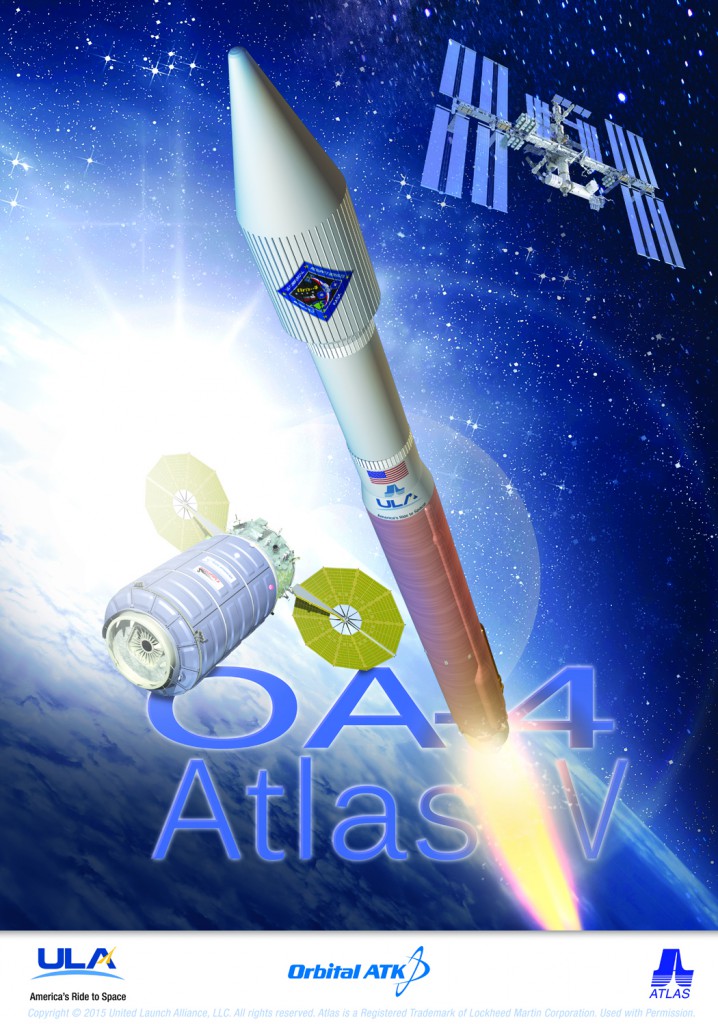
CAPE CANAVERAL — United Launch Alliance today began stacking its first Atlas 5 rocket to fly in service to the International Space Station, a commercial mission to send supplies to the orbiting complex.
This launch, planned for Dec. 3, and another targeted for March 10, are precursors to the much larger role the Atlas 5 rocket will begin playing in International Space Station operations starting in 2017. That is when the Atlas will begin launching astronauts to the station inside Boeing-built Starliner space capsules for NASA.
But first up will be unmanned cargo-delivery flights using Orbital ATK Cygnus freighters. The two rides aboard Atlas rockets were purchased by Orbital ATK as gap-fillers while working in parallel to return its Antares booster to flight by mid-2016.
As the Cygnus undergoes final preparations across the river at Kennedy Space Center, crews at Cape Canaveral’s Complex 41 this morning brought the Atlas 5 rocket’s first stage to the Vertical Integration Facility and put the vehicle on stand.
The rocket, designated AV-061, will launch in the basic, 401-variant that features an RD-180 main engine powering the first stage and an RL10 on the Centaur upper stage. The Cygnus will be enclosed in a 14-foot-diameter aluminum nose cone for atmospheric ascent.
The stacking work began as the bronze-colored, 106.6-foot-long, 12.5-foot-diameter first stage was pulled to the Vertical Integration Facility doorway, erected upright and hoisted inside the building to be put aboard the mobile launcher platform.
The stage arrived at the Cape from ULA’s Alabama factory via ocean-going ship over the weekend.
Known as the Common Core Booster, the stage produces 860,000 pounds of thrust to lift the rocket off the ground. It burns kerosene fuel and supercold liquid oxygen during the initial minutes of flight.
Upcoming, the barrel-like interstage adapter and Centaur upper stage will be lifted in place. Centaur is 41.5 feet in length, 10 feet in diameter and is fueled by liquid hydrogen and liquid oxygen.
The payload will be encapsulated in the nose cone at the Payload Hazardous Servicing Facility on Nov. 16 and delivered to the VIF for attachment to the launch vehicle on Nov. 20.
Earlier in November, Cygnus was fueled with its maneuvering propellants and the last cargo items in the “late-stow” category were packed aboard.
Liftoff on Dec. 3 will be possible during a 30-minute launch window opening around 5:55 p.m. EST (2255 GMT). That will send Cygnus on a course to rendezvous with the station on Dec. 6 at about 6 a.m. EST (1100 GMT).
The launch will be the 60th Atlas 5 rocket since 2002 and its 13th commercial flight. For United Launch Alliance, it is the company’s 103rd launch overall since 2006 and the 12th this year.
See earlier Cygnus OA-4 coverage.
Our Atlas archive.



